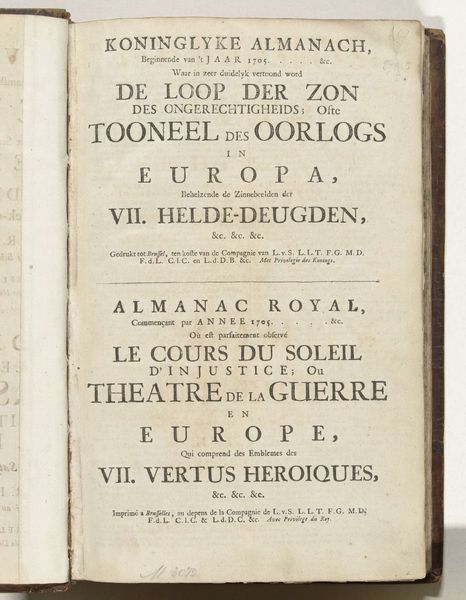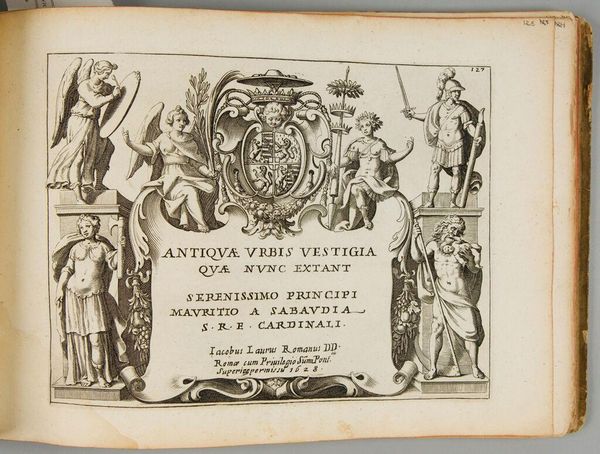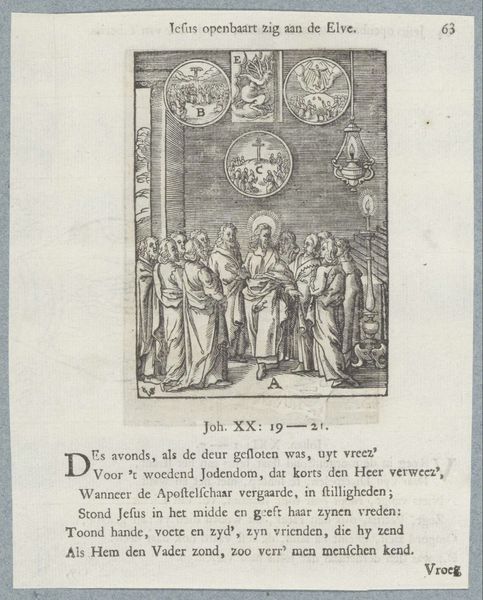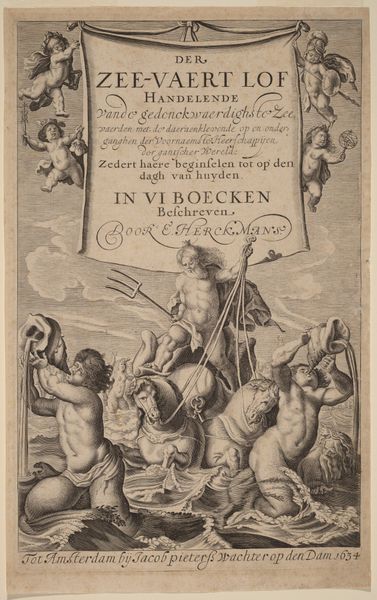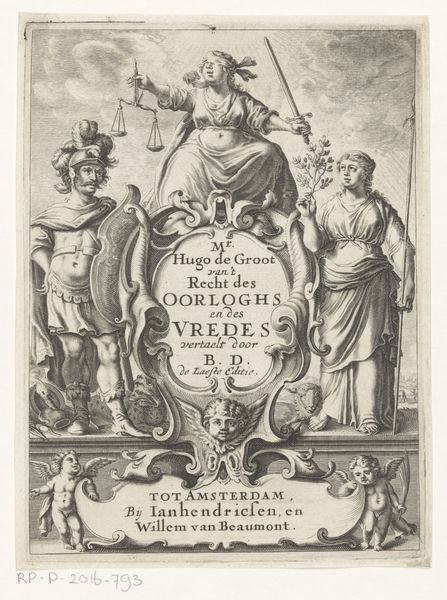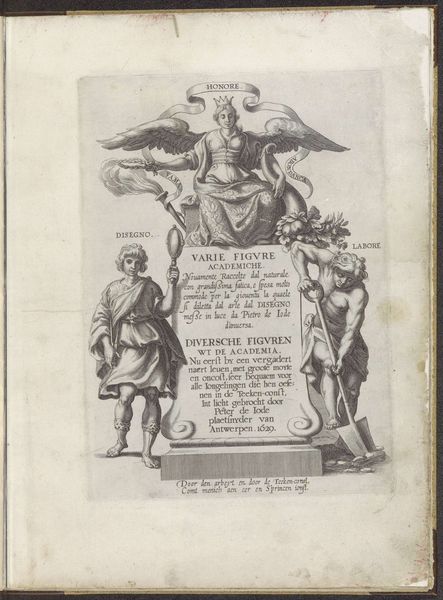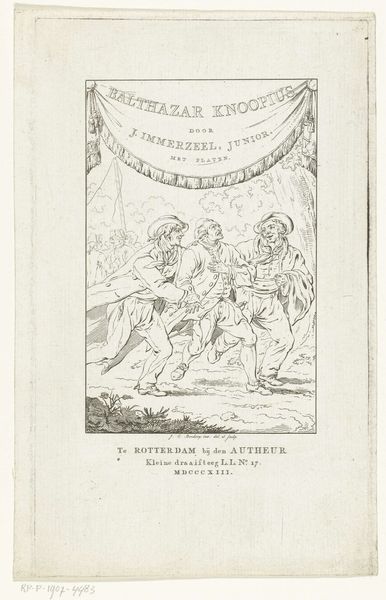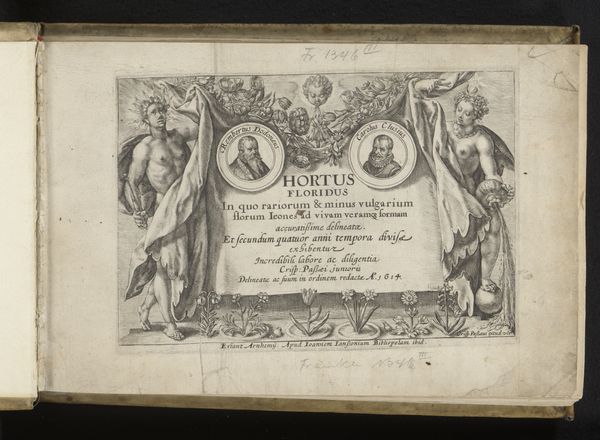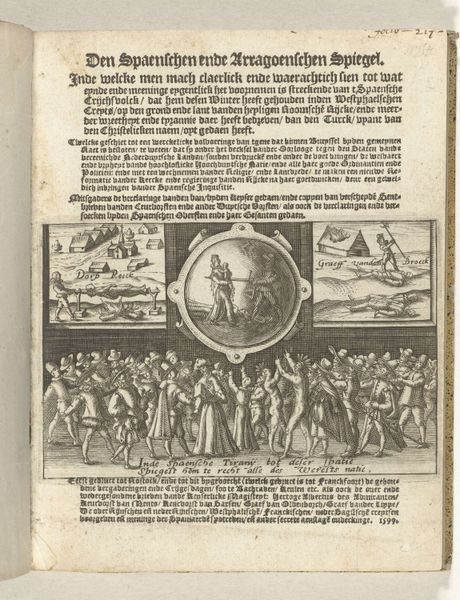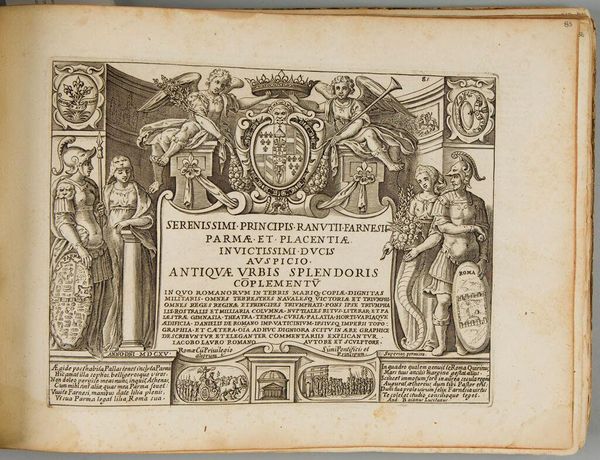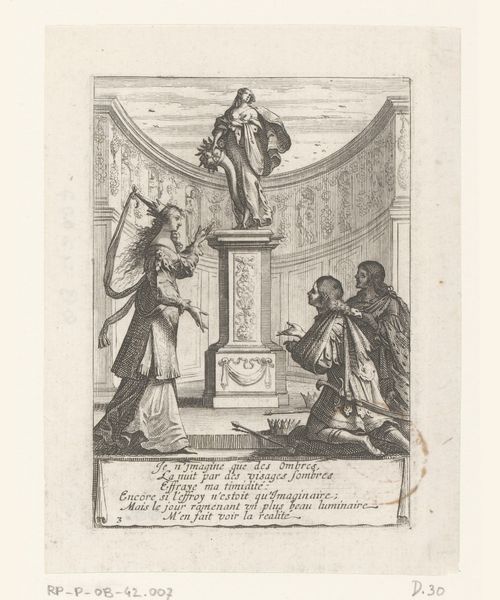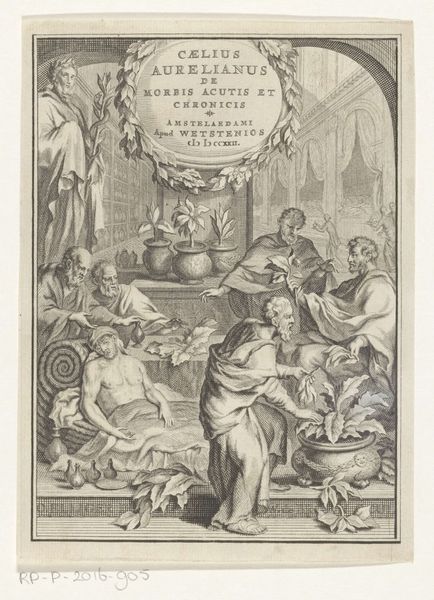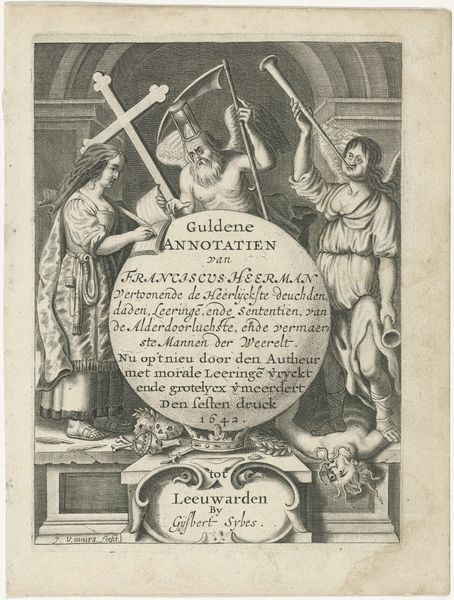
Titelpagina van: C. Zillesen, Geschiedenis der Vereenigde Nederlanden, nevens de voornaamste gebeurtenissen in Europa, dl. 3, 1799 1799
0:00
0:00
print, engraving
#
dutch-golden-age
# print
#
old engraving style
#
genre-painting
#
history-painting
#
engraving
Dimensions: height 195 mm, width 120 mm
Copyright: Rijks Museum: Open Domain
Curator: This is the title page of "Geschiedenis der Vereenigde Nederlanden," or "History of the United Netherlands," published in 1799, part three of C. Zillesen's series. Editor: It strikes me as remarkably lighthearted for a history book. There's such a sense of graceful movement. Note how the figures elegantly encircle that maypole-like structure; it’s almost balletic. Curator: The Dutch Golden Age saw history and genre painting converge, reflecting a society grappling with its own identity through narrative and representation. These were years when art frequently served nationalistic and propagandistic agendas. This book aimed to shape public understanding. Editor: Focusing on the engraving itself, there’s a certain idealized vision at play. Observe how the composition directs our eye in a circular dance around the center. The line work is delicate, almost airy, which adds to the joyous mood. It contrasts strongly with the heavy, block-lettering above. Curator: Precisely. This lightness obscures the tumultuous reality of the late 18th century— the Batavian Republic teetering under French influence. A scene like this may evoke nostalgia for perceived simpler times, promoting social cohesion through shared imagery. It's art functioning as collective memory. Editor: While acknowledging the broader political context, can't we also simply appreciate the dynamism captured here? The engraver creates the illusion of depth with varying densities of hatching. The characters seem to almost leap off the page. Curator: The figures' clothing, their positioning around the maypole… All are meticulously constructed to signal a specific vision of Dutch history—one the publisher J.C. Leeuwestijn wanted to disseminate in The Hague and beyond. Editor: I suppose that is the engraver using simple visual techniques to serve powerful messaging. The charm of this title page does somewhat belie its deeper propagandist function. Curator: Exactly. Always consider who created the image and why, especially in such politically charged times. Editor: And I’ll always appreciate the technical finesse! It reminds me that beyond political messaging, aesthetic expression matters deeply, too.
Comments
No comments
Be the first to comment and join the conversation on the ultimate creative platform.
